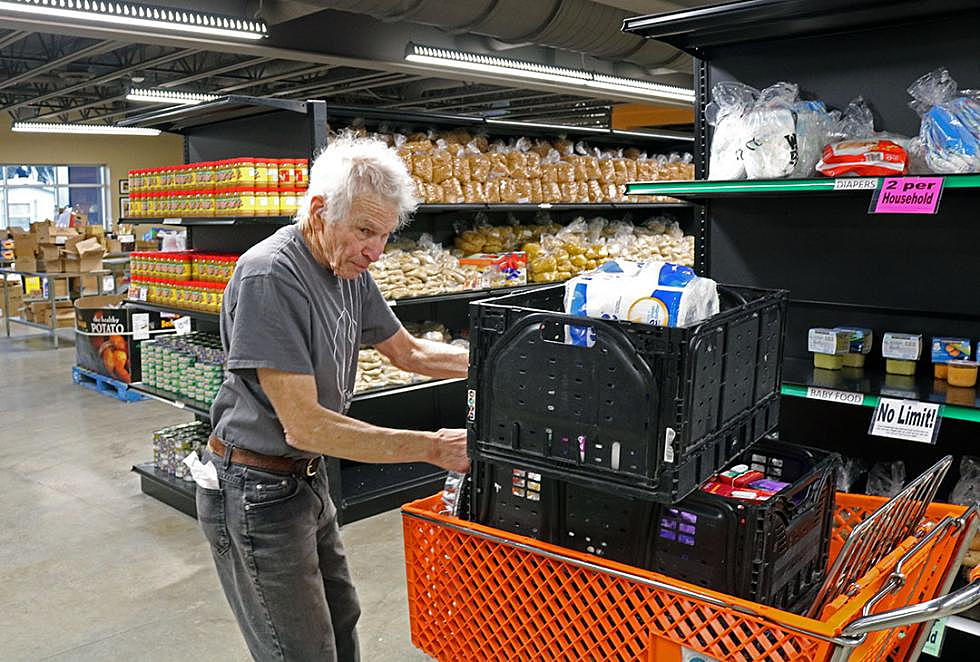
Housing costs contribute to increasing demand for Missoula Food Bank services
The shelves were stocked for the morning rush and volunteers had placed a shine on a crate of red apples, newly arrived and ready for distribution.
Like every other morning, this one saw a steady stream of clients navigate the aisles, stocking up on emergency items, be they canned beans or day-old bread, at the Missoula Food Bank.
Six months after opening its new facility on Wyoming Street, the food bank has seen its list of clients grow by more than 20 percent. Where the organization once fed around 6,500 people per month from its old center, it's now scrambling to provide food to nearly 9,000 clients – an increase that's taxing the pantry's ability to keep pace with demand.
“Our mission at its core is to make sure no one goes to bed hungry tonight, and I think we're doing that much more effectively,” said executive director Aaron Brock. “But we have increased our goals for the holiday drive this year, and that's in direct response to increasing demand.”
To meet that growing demand, the food bank has upped its annual fundraising campaign to $225,000 and 55,000 pounds of food by the end of December. It's an ambitious goal that has already received a significant boost from both Missoula Fresh Market and Jackson Contracting Group, which have each contributed $10,000 to the cause.
But for an organization that looks to put itself out of business by ending hunger, Brock admits the number of food bank clients are trending in the wrong direction. The number of seniors needing food support has also grown, as has the working poor.
“The number of folks we see who are unemployed, who are seeking work, has gone down,” Brock said. “That's a mark on an improved economy. But what hasn't kept up are wages. What we're seeing is the underemployed instead of the unemployed.”
The cost of housing also has emerged as an underlying challenge for a number of local nonprofits, including the food bank and the Poverello Center, where an increasing number of residents are staying temporarily in order to save money for a down payment on an apartment.
In a city where the unemployment rate has dipped to a scant 3.1 percent and “help wanted” signs aren't difficult to spot, the prevailing local wage remains below the state average, and the state average is well below the national average.
When combined with the cost of housing, turning to the food bank for support has emerged as a necessary outlet for some.
“The cost of living, especially housing, continues to be a burden,” Brock said. “The folks who walk through the door of the Missoula Food Bank are allocating close to 65 percent of their income just to keep a roof over their heads. That's double what a budgeting expert would tell you to spend on rent.”
Jessica Allred, the food bank's director of development, said a majority of the pantry's customers visit one to three times a year, relying on food as a safety net during hard times. When the bottom falls out and finances run short, the food bank is there to help.
A car repair or medical expenses can serve as a significant financial setback. It's then when the food bank has offered a helping hand, Allred said.
“Housing is one of the main contributors to hunger in our community,” said Allred. “What I think people may not realize is, there's many in our community who are living on fixed incomes, like Social Security or disability, and they can't access a living-wage job.”
Allred doesn't believe the increasing numbers represent new hunger in the community but rather, a sign that the food bank is doing a better job addressing an issue that's been present for a long time.
Back in 2013, the food bank surveyed 3,000 clients to ask if they'd ever needed emergency food assistance but couldn't reach the food bank for one reason or another. Of the responses, 60 percent said yes, suggesting their family had gone hungry due to some external barrier.
The new pantry has worked to reduce those barriers, offering access to food in a more dignified setting. As a result, Brock said, those who couldn't access the food bank's services now can.
And that too has driven up the numbers.
“We knew there was unmet need when we ran out of that other space, but I don't know that we estimated it quite largely enough,” said Brock. “This is a new reality that we're facing, serving more folks and more people needing to access us.”
